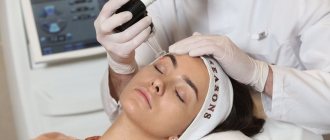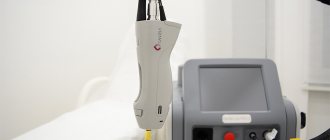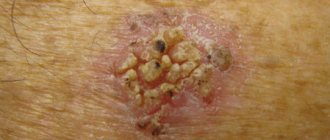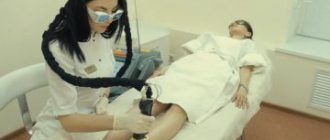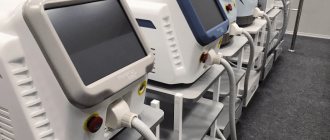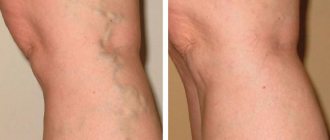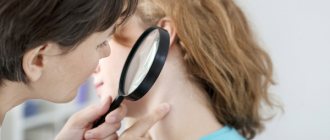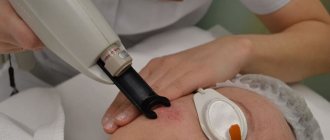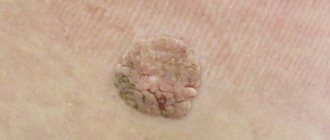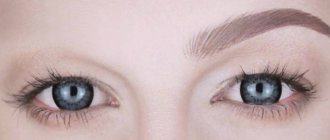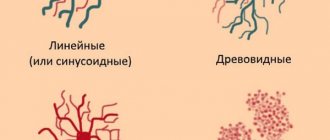Non-surgical rhinoplasty: advantages and opportunities
This method is a good solution for those for whom traditional rhinoplasty is contraindicated for some reason, as well as for those who are concerned about the dramatic changes that may result from surgery.
Among the main advantages of this method, such as non-surgical correction of the shape of the nose, it should be noted:
- Non-traumatic;
- No general anesthesia is required;
- There is no impairment of respiratory function;
- Lack of a long rehabilitation period;
- There are no stitches, and there is no need for plaster, tamponade or other measures that are inherent in traditional rhinoplasty.
Non-surgical rhinoplasty allows you to change the contours of the surface for a certain time, and, if desired, prolong the effect by repeating the procedure.
This method allows you to:
- Correct depressions and blockages in the area of the wings of the nose and bridge of the nose - by introducing fillers.
Most often, specialists resort to the use of filler injections, which allow for different corrections, both in terms of intensity and duration of the effect (depending on the chosen drug).
ENT services
Radio wave surgery in otorhinolaryngology
Radio wave surgery is a new non-contact method of cutting and coagulating soft tissue using high frequency radio waves. Radiosurgery is fundamentally different from other methods of high-frequency electrosurgery, in which tissue damage is characterized by severe burns and charring. Tissue destruction when exposed to the Surgitron radio wave apparatus is several times less than when using other electrosurgical equipment, as a result of which minimal tissue damage occurs: the absence of a blood clot in the wound after the incision; minimal necrosis in the area of the surgical wound, adjacent tissue; reduction in the incidence of inflammation; pronounced early repair and epithelization of tissues and their restoration; low postoperative wound pain; early complete healing of tissues without the formation of a rough scar. The Surgitron radiosurgical device is used in otorhinolaryngology to remove nasal polyps, papillomas, and to treat vasomotor rhinitis.
Laser surgery in otorhinolaryngology
Laser surgery is one of the modern trends in the treatment of ENT pathologies. Exposure to laser radiation leads to a more favorable course of the pathological process and accelerated recovery. Laser radiation modes used in medicine do not have a harmful effect on the body as a whole. Laser destruction of tissue is practically bloodless, which is associated with coagulation of blood in the lumen of small-diameter blood vessels in the affected area. The possibility of delivering laser energy through a light guide has expanded the possibilities of endoscopic gentle laser surgery. As a rule, after laser operations the ability to work is not impaired, and complications rarely occur. For laser operations, local anesthesia is most often sufficient. At the SvetoDar clinic, surgical laser is used to treat chronic rhinitis (medical, including medicinal, hypertrophic, allergic), dissection of synechiae of the nasal cavity, treatment of hyperplastic pharyngitis, and treatment of snoring.
Treatments for snoring
The cause of snoring is a decrease in the muscle tone of the soft palate, which progresses with age. During sleep, the soft palate vibrates, its sagging periodically blocks the upper respiratory tract, which is manifested by short-term cessation of breathing (apnea). The development of snoring is predisposed by impaired nasal breathing, trauma, chronic tonsillitis (including hypertrophy of the palatine tonsils). Snoring can be triggered by sudden weight gain and smoking.
Features of non-surgical rhinoplasty by introducing fillers
Rhinoplasty performed in this way is not intended to correct respiratory functions or significant defects in the shape of the nose.
This procedure allows you to:
- Fill minor depressions;
- Make the hump invisible;
- Correct sharp corners;
- Restore the symmetry of the nose.
As noted above, the durability of the effect of such a correction directly depends on the chosen drug administered, on average from 6 months. up to 1 year.
Preparing for your appointment
Preparing for an appointment with an ENT specialist is not difficult, but some points should be taken into account in order for the examination to be effective:
- Stop taking medications that were not prescribed by your doctor. They can affect test results, which will cast doubt on the diagnosis.
- Tell your doctor about any medications you are taking to treat other conditions that cannot be stopped during the examination.
- If symptoms are pronounced, stop using medications that relieve symptoms three hours before your visit.
- Take your medical record and test results with you if you already have them.
In addition, remember in detail when the first symptoms appeared, under what circumstances, and analyze your well-being. This will help make a more accurate diagnosis, because every little detail is important.
Our center specialists use:
1. Biodegradable drugs that decompose over time and are naturally eliminated from the body. These include:
- Preparations based on hyaluronic acid;
- Drugs with a long (up to 3 years) absorption period
Biodegradable fillers will not be able to provide a very long lasting effect, however, they have a positive effect on the facial skin when injected, improving its tone and texture.
Indications for use
It is necessary to make an appointment with an otolaryngologist if you notice problems of this nature:
- - Dry nose, which literally makes it difficult to breathe.
- - A persistent cough or runny nose that does not respond to treatment.
- - Bad breath.
- - Problems with sleep.
- - Feeling weak and tired in the morning.
- - Frequent snoring.
These are the symptoms that should alert you and cause you to make an appointment with a specialist. However, there are a number of symptoms that require immediate medical attention, because the disease has already entered the acute stage:
- — There is purulent discharge from the nose, which is accompanied by pain.
- — Hearing problems and loss of smell.
- - Difficulty swallowing, throat becomes red.
- — The lymph nodes in the upper part of the body are enlarged.
Do not delay visiting a specialist if there are such obvious signs of the disease. And, of course, don’t bring yourself to such problems. It is better to consult a doctor at the first symptoms that begin to bother you regularly. Also, a visit to an otolaryngologist is needed once a year as a disease prevention measure.
Methodology
The procedure for non-surgical rhinoplasty requires a preliminary consultation with a specialist who will determine both the type of filler that is optimally suitable and the required dosage. In addition, a consultation will be required to determine the presence/absence of contraindications to this type of rhinoplasty (absolute contraindications are: diabetes mellitus, cancer and autoimmune diseases, hemophilia and bleeding disorders).
Non-surgical rhinoplasty is performed on an outpatient basis and using local anesthetics in the form of special creams. 15 minutes after this, the doctor begins to administer small doses of the drug into pre-selected areas. This manipulation continues for 30-40 minutes.
After the manipulation is completed and the sensitivity of the facial skin is restored, the patient can leave the clinic. The rehabilitation period after the procedure is not long - within a day the person can return to their usual rhythm of life. The full effect will be noticeable in 3-4 days.
The only condition that concerns both the recovery period and life in the future is the prevention of nasal injuries. Failure to follow this rule can cause not only the leveling of the cosmetic effect, but also the appearance of more serious problems, for example, tissue fibrosis, displacement of the gel implant and other negative consequences.
In conclusion, it should be noted that a cosmetic procedure correctly performed at the Ethel Center for Beauty and Medical Cosmetology clinic will allow the patient to enjoy the changes in his own appearance and enjoy them for 1-3 years. After this period ends, injection plastic surgery will need to be performed again.
Where and in what clinics can you get rhinoplasty of the nose in Ivanovo
| Name of medical institution | Photos before and after rhinoplasty | Minimum cost and contact information |
| Clinic "Grand Estet-Ivanovo" | From 20,000 rubles Address: 10th Sosnevskaya street, 109 Telephone | |
| Medical and sanitary unit "Ivanovoiskozh" | From 26,000 rubles Address: Okulova street, 80 Telephone | |
| Russian Railways Hospital-Ivanovo | From 19,000 rubles Address: st. Normandy-Neman Regiment, 106 Telephone | |
| Clinic "Jeunesse" | From 14,800 rubles Address: st. Komsomolskaya, 16 Telephone | |
| Clinic "Nice-Med - Ivanovo" | From 30,000 rubles Address: st. Kukonkovykh, 128 Telephone | |
| Medical | From 49,900 rubles Address: Mikhalevskogo lane, 17 Telephone |
Clinic "Grand Estet-Ivanovo"
The clinic provides all current rhinoplasty services, including primary and secondary. The price range varies depending on the services provided, approximately calculated at the city average.
Medical unit "Ivanovoiskozh"
The main emphasis in the clinic is on solving problems with osteotomy; the pricing policy is somewhat higher than in the first clinic, but there is a more professional approach to performing certain tasks.
Russian Railways Hospital-Ivanovo
An affordable solution will be nose correction, ordered at the Russian Railways-Ivanovo hospital. Despite the small range of services, the clinic places its main emphasis on reconstructive rhinoplasty, allowing you to solve breathing problems and restore normal functioning of the nose.
Clinic "Jeunesse"
The Jeunesse Clinic is a fairly rapidly developing center that provides professional services regardless of the nature of the problem.
Clinic "Nice-Med - Ivanovo"
One of the excellent options is the Nice-Med clinic - Ivanovo, which is noted for its pleasant service and the professional approach of its doctors to solving their problems.
Medical
Medical is the ideal solution for those who want to receive the highest level of service in a prestigious location.
Currently, these are the most popular and relevant clinics whose services you can use. Only highly qualified, experienced doctors work in these clinics. To choose the right plastic surgeon for you in Ivanovo, go for a consultation with several specialists, ask them to show a full portfolio of their work and find out what rhinoplasty techniques they specialize in. The cost of a consultation with a plastic surgeon in Ivanovo varies from 900 to 1300 rubles. The plastic surgeon will calculate the price of rhinoplasty at the appointment; it is individual for each patient and is determined by the volume and complexity of the work, and the patient’s current state of health.
Diagnostic methods
Modern medicine offers many options for examining ENT organs. Otolaryngology uses the following examination methods:
- - Lab tests.
- — Endoscopic techniques – pharyngoscopy, etc.
- — X-ray.
- — Ultrasound and computed tomography.
In addition, blood and urine tests are required to see the overall picture of the body’s condition. Audiometry is used to determine hearing loss. Only after a complete examination and accurate diagnosis can treatment begin.
Removal of vascular network, acne treatment, skin rejuvenation with Deka neodymium laser
LASER VESSEL REMOVAL
A network of red or blue blood vessels on the face (telangiectasia) can appear in many people for a variety of reasons. The main ones are excessive sunbathing, saunas, frostbite of the skin and, especially, genetic predisposition. Provoking factors may include excessive coffee consumption, smoking, taking hormonal medications, and emotional stress. Alcohol also plays a negative role in this process, although a person who does not drink alcohol at all may have a “red nose”. A network of vessels on the legs appears both in very young women after childbirth, and in older people due to a violation of the patency of the veins. Currently, dermatological lasers have appeared that can remove damaged blood vessels. The previously existing method of electrocoagulation was associated with a high risk of scarring on the skin. There were no effective treatments for port-wine stains in the pre-laser era.
In our center, vascular pathology is removed using a neodymium laser on the SYNCHRO REPLA:Y platform (DEKA, Italy).
The method of laser removal of blood vessels is called selective photothermolysis. It is designed specifically for the removal of small subcutaneous capillaries and vascular tumors (hemangiomas). The laser beam penetrates the subcutaneous capillaries without damaging the skin. All light energy is accumulated on the red pigment of the blood. The vessel heats up, sticks together and disappears. The laser pulse selectively heats the blood vessel and coagulates it, which provides a unique opportunity to remove diseased vessels without damaging the skin. The procedure, as a rule, is easily tolerated by patients - the laser pulse is felt like a weak prick with a thin needle, and skin irritation is insignificant. Superficial vessels and vessels with a small diameter disappear almost instantly after the first procedure, and for vessels located deeper and vessels with a large diameter, several procedures must be completed. Using this technique, hemangiomas, vascular networks on the legs and capillaries on the face can be removed.
It should be noted that the method in question has been widely used throughout the world over the past 20 years. In the United States, for example, more than 1 million people undergo the procedure of vessel removal every year. The method has received approval and permission for use by the US FDA (Food and Drug Association). Laser blood vessel removal is rightly considered the “gold standard” throughout the world.
Many patients, of course, are concerned about the question: “Can dilated vessels appear again?” Answer: “Yes, they can, if there is a genetic predisposition to this or external predisposing factors are not eliminated.” Based on our many years of clinical experience, it usually takes several years for new vessels to appear. In this case, they are very easy to remove with a second laser therapy session. Previously removed vessels and port-wine stains most often do not reappear in practice.
The neodymium laser from Deka (Nd:YAG (1064 nm)) is a long-pulse laser, therefore it is capable of penetrating the skin to a depth of 6 mm, which allows it to be used to eliminate vascular networks not only on the face, but also on the legs. The built-in cooling system allows the procedure to be carried out comfortably for the patient. Immediately after the procedure, redness and swelling may occur at the site of treatment, but they pass quickly enough. also, the treated vessel may change its color (darken), the result should be assessed no earlier than after 2-3 weeks; to completely eliminate the vessels, one to several procedures may be required, depending on the size of the vascular formation and the depth of its occurrence.
Other procedures performed using neodymium laser; Deka (Nd:YAG (1064 nm)
— neodymium laser hair removal
. The neodymium laser hair removal technique involves selective laser action on hemoglobin and oxyhemoglobin, which destroys the vascular component of the hair follicle, which leads to the death of hair in the treated area. The advantage of the Nd:YAG laser is the ability to obtain high results and effectively affect dark, red, gray, blond and even vellus hair.
— laser non-ablative skin rejuvenation
. The neodymium laser beam affects the deep layers of the skin. Thus, it stimulates the replacement of old fibers with a new collagen-elastin framework. As a result, local immunity is activated, the activity of fibroblasts improves, which leads to rejuvenation of the skin of the face, décolleté, neck, hands, etc.;
— acne therapy
. A neodymium laser beam has a bactericidal effect and reduces inflammation of the sebaceous glands at any stage of development. The effect of the laser is based on the destruction of the protein shell of the pathogenic microflora (causative agent), as a result of which the lesions are sterilized and the external and internal manifestations of the disease are completely eliminated.
